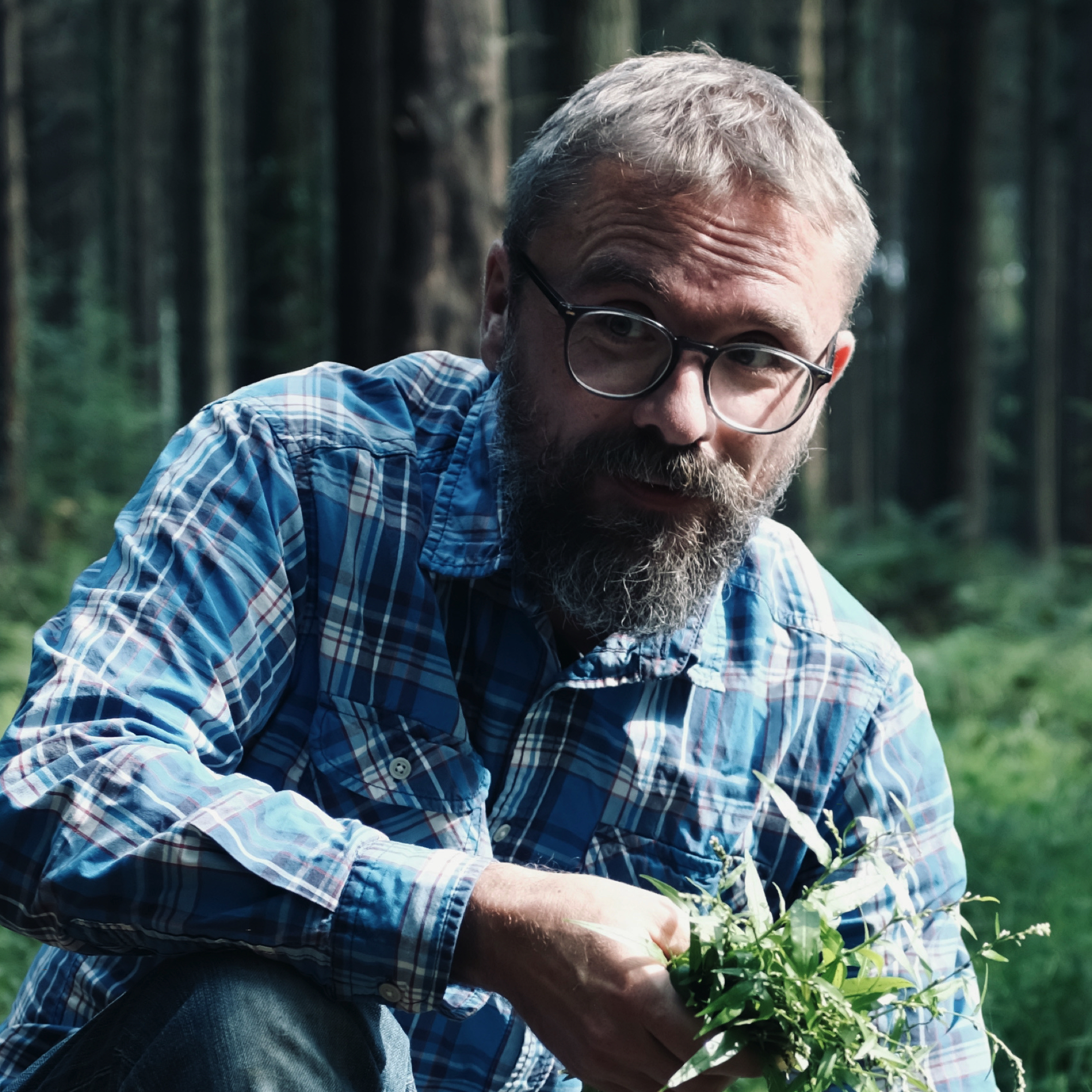Preserving our heritage can have a remarkable effect on wildlife. Old airfields are taken over by ground-nesting birds, empty attics are colonised by bats and crumbling, ivy-clad castles become clifftop refuges for seabirds. Here are ten fascinating sites across the UK where history meets the wild.
Greenham Common, Berkshire
During the cold war, RAF Greenham Common was famously the home of NATO’s nuclear deterrent: an arsenal of short- to long-range cruise missiles targeted on Soviet Russia. From the early 1980s until 2000, the perimeter fence also became home to the Greenham Common Women’s peace camp. At its height, 30,000 women protesters lived permanently at the site, attracting worldwide media interest and edifying the international peace movement.
Visit today and you won’t hear the sound of fighter jets taking off or the melodies of protest songs, rather the shrill calls of larks breaking the silence over this long expanse of grassland. Peppered with egg-yolk yellow flowering gorse and vibrant pink heather, the site is home to 30 species of butterfly and its open heath attracts birds such as skylarks, woodlarks, nightjars and linnets. Though the runway is now mostly grown over, you can still trace its path with a keen eye. The missile silos are cornered off but can be seen clearly from many parts of the site, and the old control tower is now a visitor centre.
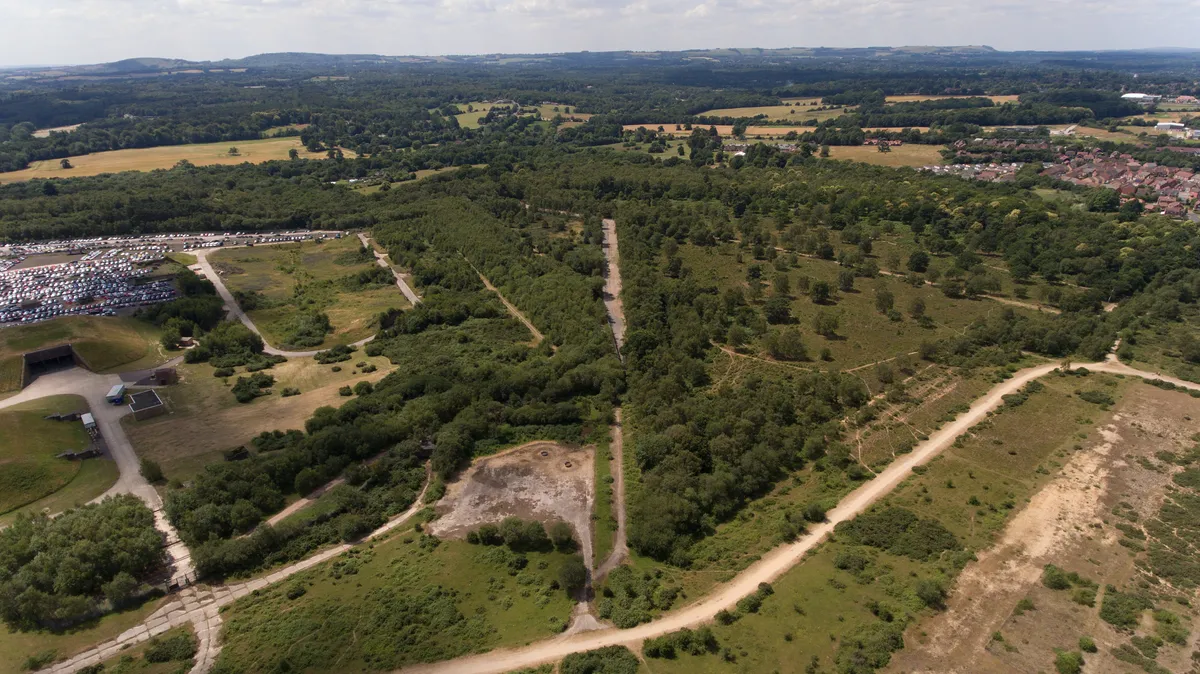
Sinclair Girnigoe Castle, Scottish Highlands
To the north of Wick, almost as far as you can go without falling off the end of Scotland, Sinclair Girnigoe Castle stands precariously on a wind-battered cliffside, barely distinguishable from the rocky coast. Looking like something from a fantasy novel, it’s surrounded by sea on three sides – and this strategic location was taken advantage of by the Sinclair family, who built Castle Girnigoe in 1470.
In 1577, the Earl of Caithness, George Sinclair, imprisoned his son at Girnigoe, feeding him nothing but salt beef until he died of dehydration. In the 16th century, the castle was extended to include a house, and became known as Sinclair Girnigoe. It was seized by Oliver Cromwell’s men during the Civil War, then later descended into ruin after an ownership dispute. Today, dolphins and seals frequent the undisturbed cool waters around the castle. Orcas occasionally visit and the sea stacks and cliffs are much loved by seabirds.

Candleston Castle, South Wales
Dating from the 14th century, Candleston Castle stands in a small mixed woodland on the eastern edge of the Merthyr Mawr Dunes. The dunes formed on a carboniferous limestone plateau and are the second largest of their kind in Europe. The range of invertebrate-friendly habitats around the ruin - which include meadows, farmland and a gentle stream running through the woods – allow a range of species to thrive, including cinnabar and six-spot burnet moths and butterflies such as the grizzled skipper and dark green fritillary. The rare cuckoo bumblebee (which lays its eggs in the nests of other bees) can also be found close to the castle, while the dunes themselves are home to dune tiger beetles.
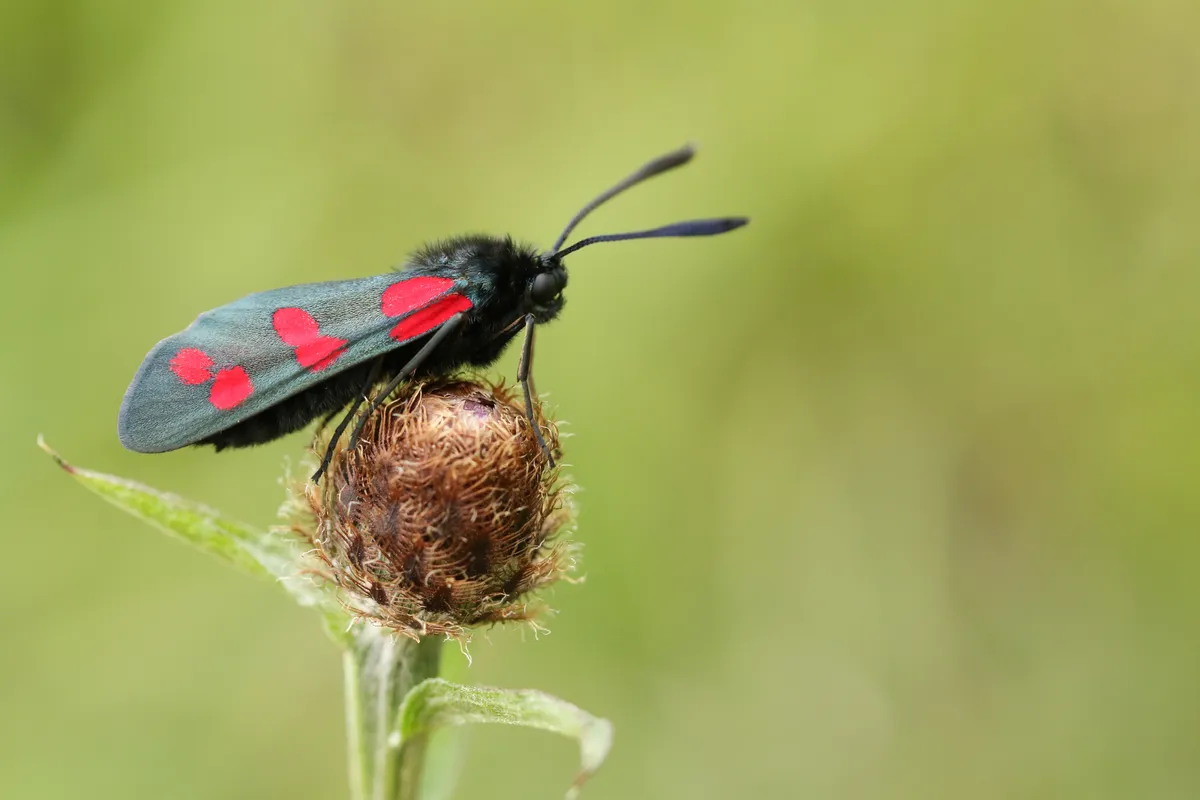
Inchcolm Abbey, Scotland
Legend has it that, in 1123, a violent storm hit the Firth of Forth, forcing Alexander I of Scotland to seek refuge on the island of Inchcolm. For three days the king was fed and sheltered by the island’s hermit, and in recognition of his kindness, founded Inchcolm Abbey. It would be his brother who eventually had the abbey built, but despite its seemingly tranquil location, life there was far from peaceful: it became a target for English ships during the conflicts that raged for centuries between the two nations.
During both World Wars, Inchcolm’s strategic location came into play again and the island was heavily fortified against German invasion. These crumbling concrete constructions still dot the island’s semi-deserted long, sandy beaches, which are a now haven for grey seals. Dolphins regularly accompany boats over the Firth, while the shallow waters are also attractive to puffins, darting across the water in search of fish.

Lindisfarne Priory, Northumberland
Holy Island is home to the ruins of Lindisfarne Priory, founded by Irish monks in 635AD and abandoned following Viking invasion. Another priory was built after the Norman Conquest, and it is the remains of this that still stand. The surrounding dunes, saltmarsh and mudflats are designated a National Nature Reserve and are a great spot to see migrating birds in autumn and visiting wildfowl and waders in winter. In summer, look out for the endemic Lyndisfarne helleborine in the dune slacks, one of 11 orchid species found here, as well as many other nationally important plants.
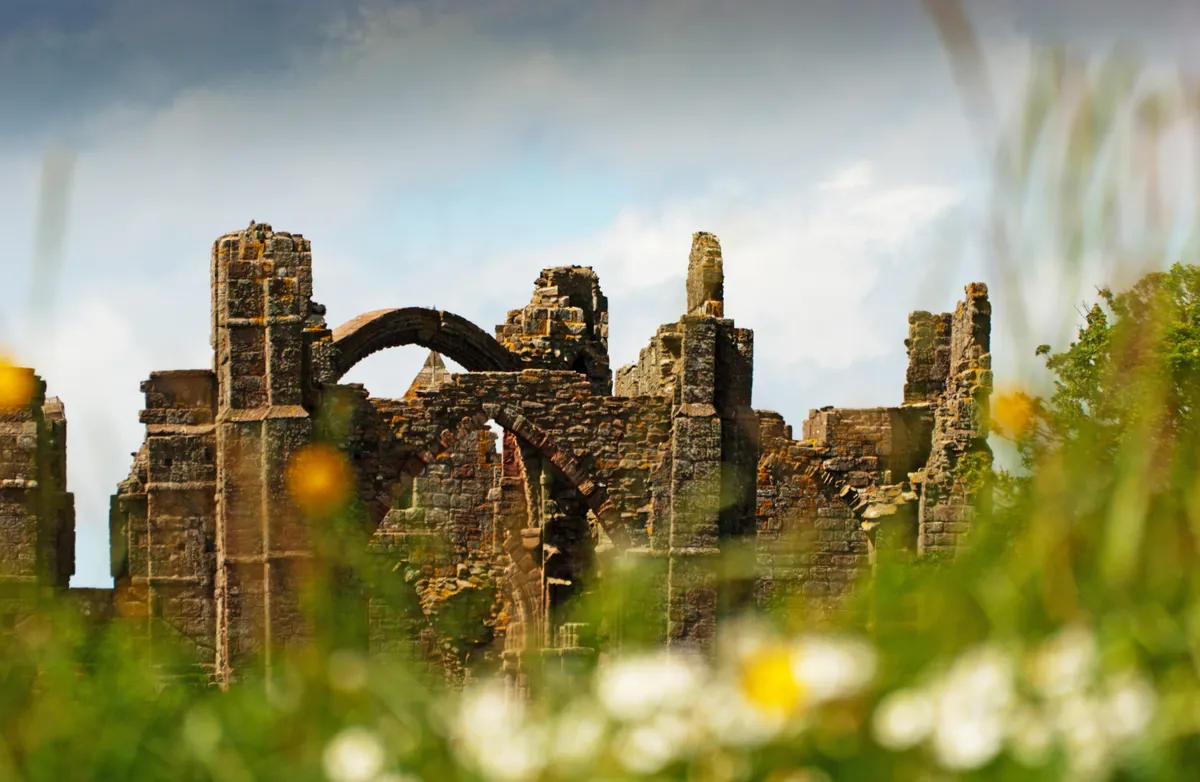
Llys Euryn Mansion, North Wales
This large 15th century mansion is now roofless, its crumbling form resembling a walled garden rather than a country home. A large chimney stack rises from a big open fireplace and this, along with two other exterior walls, enclose a courtyard. It sits in a wooded corner of Bryn Euryn, a prominent limestone hill close to Rhos on Sea, and offers commanding views over nearby Colwyn Bay.
Swathed in a mix of grassland and woodland, the small hill packs a very biodiverse punch for its size, with more than 26 species of butterfly recorded here. Wildflowers such as scabious, eyebright, ladies’ bedstraw and goldenrod attract pollinating insects including hoverflies, carder bees and an array of moths. It's a popular walking spot, but the wild seems to go on undeterred: in the woods close to the ruin you’ll spy treecreepers, nuthatches, tits and goldcrests darting among the foliage in search of insect prey.

St Benet’s Abbey, Norfolk
This atmospheric, 10th century ruin – complete with the crumbling remnant of the windmill built into its gatehouse in the 1800s - presides over the marshes on the River Bure, south of the village of Ludham on the Norfolk Broads. Over the centuries, wealthy landowners, believing they would secure a place in heaven, donated more and more land to the abbey and its power and influence grew across 76 separate parishes.
The abbey had a profound effect on the Norfolk landscape. Its monks had the right to dig peat from the area for use as fuel, with the resulting excavations eventually flooding to form the Norfolk Broads. The marshland surroundings of this much-loved ruin are home to herons and marsh harriers. Short-eared and barn owls quarter the fields in winter and flocks of pink-footed geese arrive in autumn. The wider countryside is also, famously, home to a breeding population of common cranes, which returned here in 1979.

Woodchester Mansion, Cotswolds
Tucked away in a secluded Cotswold valley, this large French gothic revival mansion was never finished. Wealthy landowner William Leigh commissioned architect Benjamin Bucknall to build the house in the mid-19th century. When William died in 1873, his family couldn’t afford to complete the project, living instead in the gatehouse.
Humans have never occupied the house, but this empty stone building, with its cavernous attic, has provided a much-needed refuge for greater and lesser horseshoe bats. After spending winter in hibernation, the bats arrive in the spring. New broods are born each summer and by the end of the season the colony can surpass 1,000 individuals.
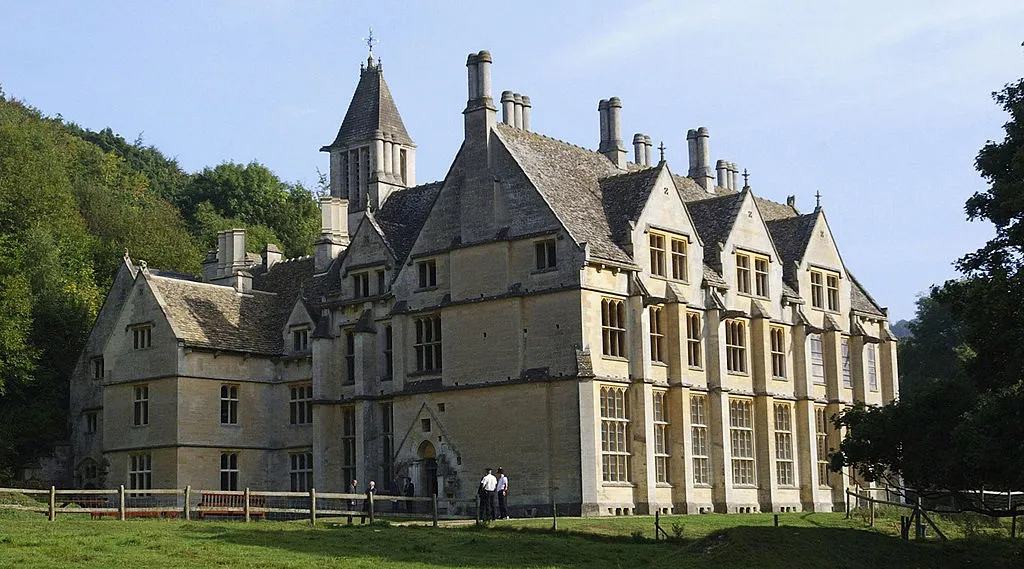
Kennall Vale Gunpowder Works, Cornwall
In its heyday in the 1800s, more than 50 buildings were associated with the gunpowder works at Kennall Vale, which operated for nearly 100 years manufacturing explosives for mining and quarrying. The works' remote location was for obvious safety reasons, and trees were planted all over the complex to absorb the blast of a potential explosion. In 1838, the inevitable happened, with a blast so powerful it was said to blow one of the roofs a mile from the site.
Today, peace reigns, and the site is Cornish Wildlife Trust Nature Reserve. The disused buildings are being reclaimed by woodland vegetation, their remnants providing homes for pipistrelle bats. Such is the abundance of birdlife in the valley that their song is near deafening; look particularly for dippers, characteristically bobbing up and down on the river that meanders through the site.

The Brough of Birsay, Orkney
The Brough of Birsay is a wild place – an uninhabited isle north-west of the Orkney mainland. The mysterious Picts first established a village here in the 6th century and the island is thought to have been an important centre of power. Vikings displaced the Picts in the 9th century, building their own village on the island. The remains of both settlements still exist - in many ways the village had all the trappings of modern luxury, with signs of underfloor heating and even a sauna built on the island, along with a church, barns and a smithy.
With its inhabitants long since departed, Brough feels a lonely place, facing the full force of Arctic weather fronts barrelling in from the North Sea. But its vertiginous cliffs are beloved by seabirds, with razorbills, gannets and oystercatchers all making a living here, alongside large breeding colonies of fulmars and guillemots. Puffins also arrive in the spring and summer, nesting in the burrows on the grassy sea cliffs.
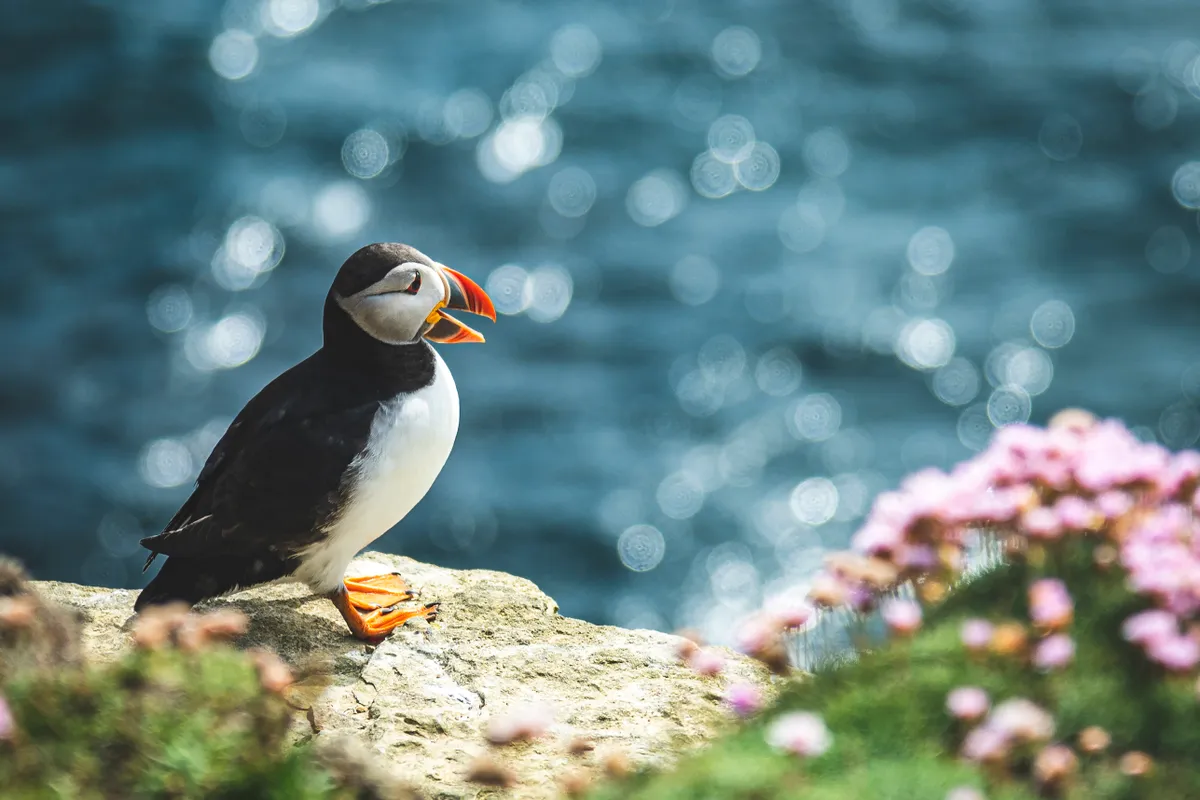
Main Image: Lindisfarne Priory ruins © Alphotographic/Getty
